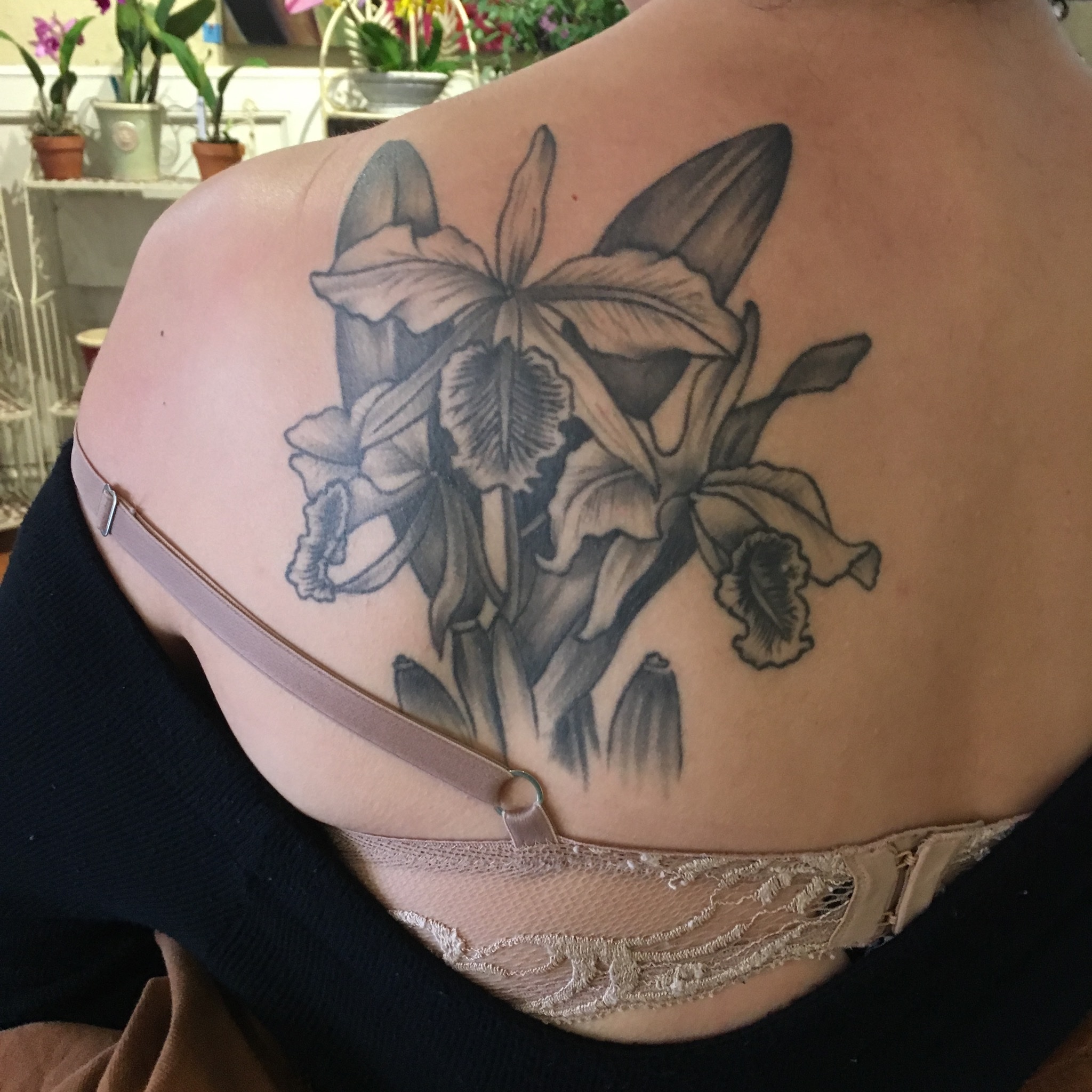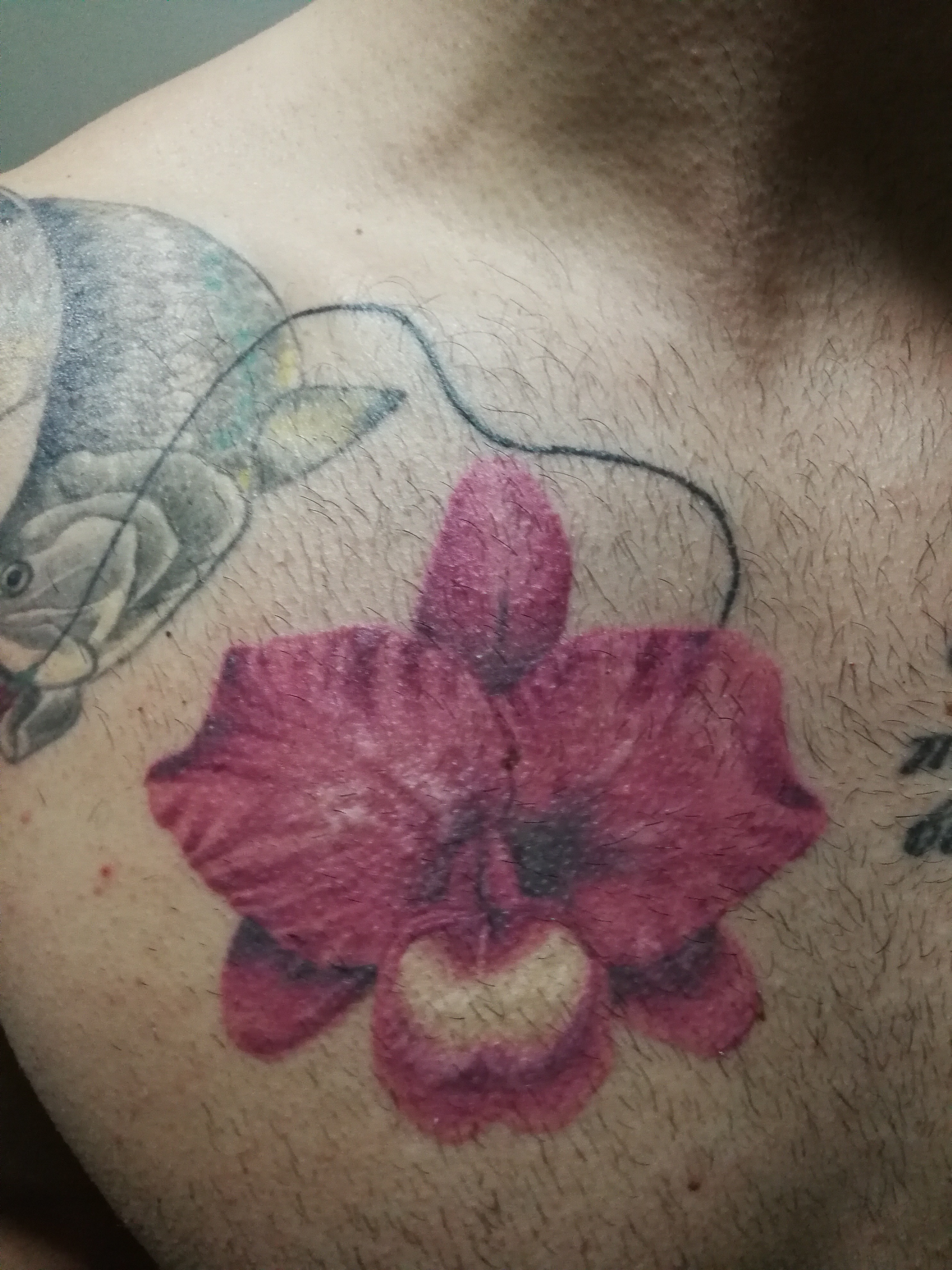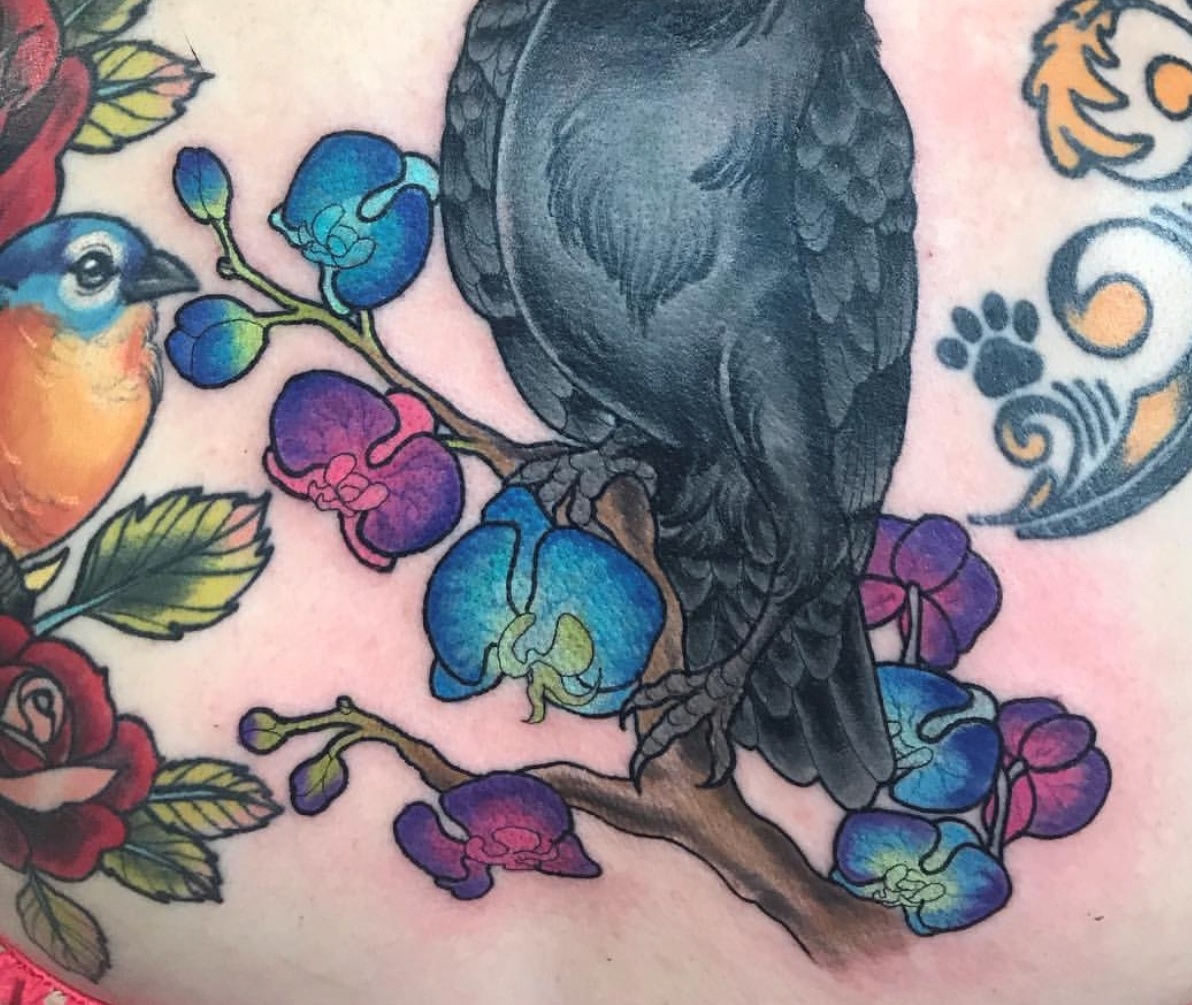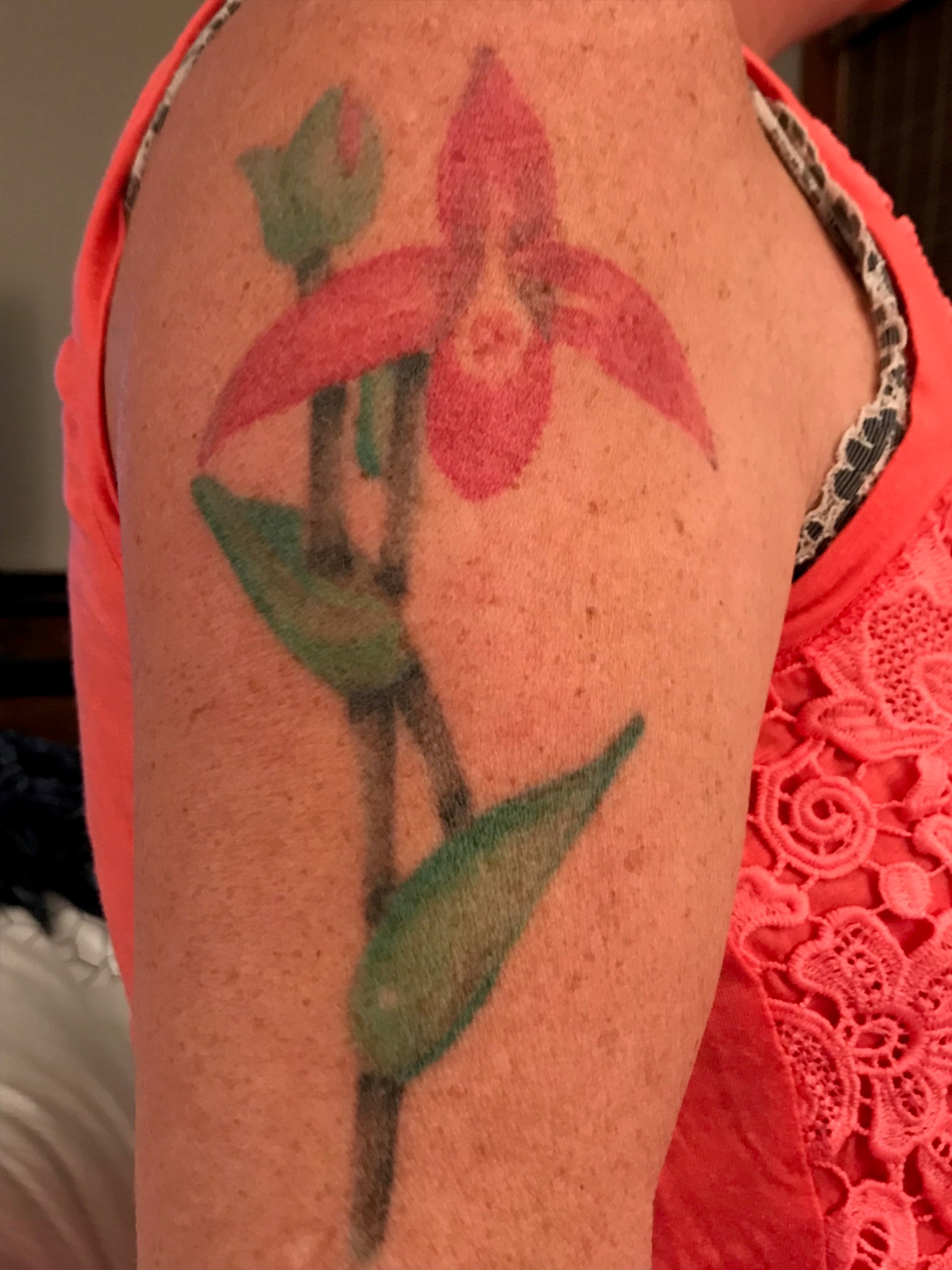
“The owner of this tattoo is a nanny in Richmond. She was raised in Colombia where Cattleya trianaei is the National Flower. The three-blossom drawing with foliage is an example of a charcoal drawing with shading.” Photo Credit – Arthur Chadwick
Just down the street from our orchid shop is a 1920’s brick storefront with a neon sign in the window that reads, “Girls! Girls! Girls!” Despite the connotations, this place is respectable. It’s a bustling business called Black Rabbit Tattoo that has an all-female staff and was recently named Best Tattoo Parlor in Richmond, Virginia by Style Weekly readers.
Inside, there are six tattoo stations going simultaneously and a cheerful waiting room. The artists who work there get many requests for flowers. “Roses and cherry blossoms are the most common but I’ve also done lavender, bluebonnets, lilies, gardenias, and, of course, orchids” says Holley Screen, who was previously a floral designer in New Jersey. “Flowers can be tricky but big open blooms with minimal petals like orchids are easy.”
It may be easy for talented designers like Screen to draw orchids but, given the permanence of the artwork, first time clients have some challenging decisions to make. For starters, “What kind of orchid should be drawn?”, “How big should the image be?”, and the all-important, “Where on my body should this ink go?” The answers to these questions are best decided well in advance.
One of the foremost resources for flower designs is the social media app, Instagram, where the hashtag, #orchidtattoo, has over 20,000 posts. Phalaenopsis sprays are, by far, the most common as this orchid is widely available in stores and the gracefully arching buds and blossoms have lasting appeal. There are also vivid close-ups of individual blooms.
Other orchid genera offer distinctive features not found on Phalaenopsis. The alluring pouches of Paphiopedilums, the frilly lips of Cattleyas, the clustering buds of Epidendrums. These flower parts are truly works of art.
And let’s not forget the fascinating foliage. Part of an orchid’s personality is the greenery. For example, a big blue Vanda with its trademark fan-shaped leaves is a real showstopper. It’s a good idea to bring a picture of the entire plant in order to discuss design possibilities with the artist.
The all-important question of tattoo placement boils down to this: Some people want to keep their ink hidden while others like to show it off. Discrete locations include behind the ear, on the side of the foot, and beneath undergarments. Flowers are often visible because of the beauty and happiness they instill.
The history of inking dates back thousands of years but the practice became popular in the U.S. with servicemen returning home from overseas. Today, there is a surge in popularity and it’s estimated that 14% of all Americans have at least one tattoo. The addition of orchids offers the guarantee that there will always be something in bloom.

"The owner of this tattoo is an orchid judge in Costa Rica. He grew Cattleya skinneri, which is the National Flower, into a specimen plant with 50 blossoms.” Photo Credit – Gabriel Bach

“This Phalaenopsis tattoo is part of a mural that includes roses and birds. The artist took liberty with the orchid colors.” Photo Credit – Rosemary/Black Rabbit Tattoo

“The owner of this tattoo is a grower in New Hampshire. She was able to bloom this orange Phragmipedium hybrid effortlessly in her kitchen window and got very attached.” Photo Credit – Katie Crozier
